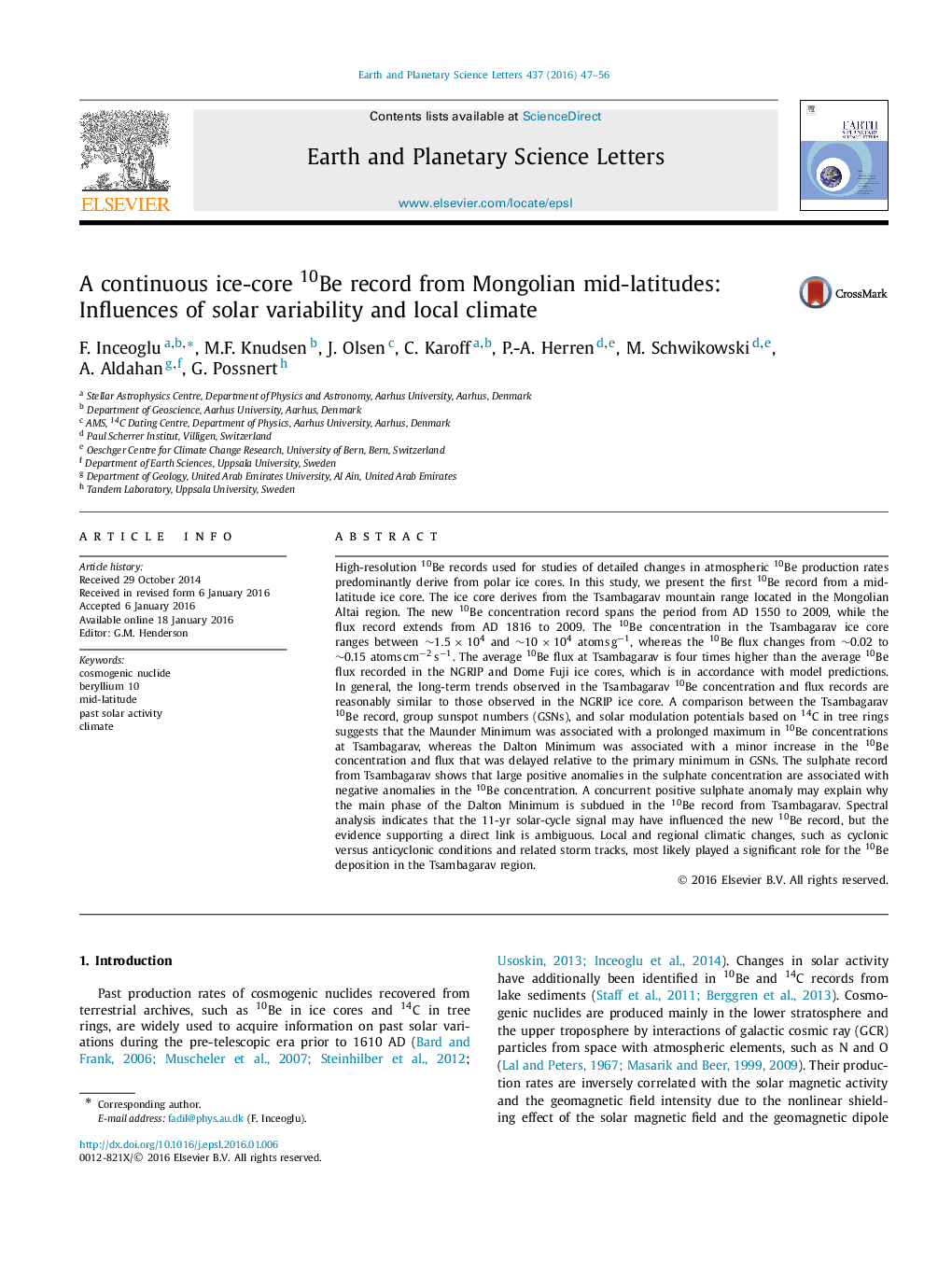| کد مقاله | کد نشریه | سال انتشار | مقاله انگلیسی | نسخه تمام متن |
|---|---|---|---|---|
| 6427668 | 1634719 | 2016 | 10 صفحه PDF | دانلود رایگان |

- We present the first long-term 10Be archive from a mid-latitude ice core.
- The Tsambagarav 10Be record supports higher fluxes at mid-latitudes than the polar regions.
- The Tsambagarav 10Be record shows periodicities can be associated with know solar cycles.
- Local climatic changes most likely affected the 10Be deposition.
High-resolution 10Be records used for studies of detailed changes in atmospheric 10Be production rates predominantly derive from polar ice cores. In this study, we present the first 10Be record from a mid-latitude ice core. The ice core derives from the Tsambagarav mountain range located in the Mongolian Altai region. The new 10Be concentration record spans the period from AD 1550 to 2009, while the flux record extends from AD 1816 to 2009. The 10Be concentration in the Tsambagarav ice core ranges between â¼1.5Ã104 and â¼10Ã104atomsgâ1, whereas the 10Be flux changes from â¼0.02 to â¼0.15 atomsâcmâ2âsâ1. The average 10Be flux at Tsambagarav is four times higher than the average 10Be flux recorded in the NGRIP and Dome Fuji ice cores, which is in accordance with model predictions. In general, the long-term trends observed in the Tsambagarav 10Be concentration and flux records are reasonably similar to those observed in the NGRIP ice core. A comparison between the Tsambagarav 10Be record, group sunspot numbers (GSNs), and solar modulation potentials based on 14C in tree rings suggests that the Maunder Minimum was associated with a prolonged maximum in 10Be concentrations at Tsambagarav, whereas the Dalton Minimum was associated with a minor increase in the 10Be concentration and flux that was delayed relative to the primary minimum in GSNs. The sulphate record from Tsambagarav shows that large positive anomalies in the sulphate concentration are associated with negative anomalies in the 10Be concentration. A concurrent positive sulphate anomaly may explain why the main phase of the Dalton Minimum is subdued in the 10Be record from Tsambagarav. Spectral analysis indicates that the 11-yr solar-cycle signal may have influenced the new 10Be record, but the evidence supporting a direct link is ambiguous. Local and regional climatic changes, such as cyclonic versus anticyclonic conditions and related storm tracks, most likely played a significant role for the 10Be deposition in the Tsambagarav region.
Journal: Earth and Planetary Science Letters - Volume 437, 1 March 2016, Pages 47-56